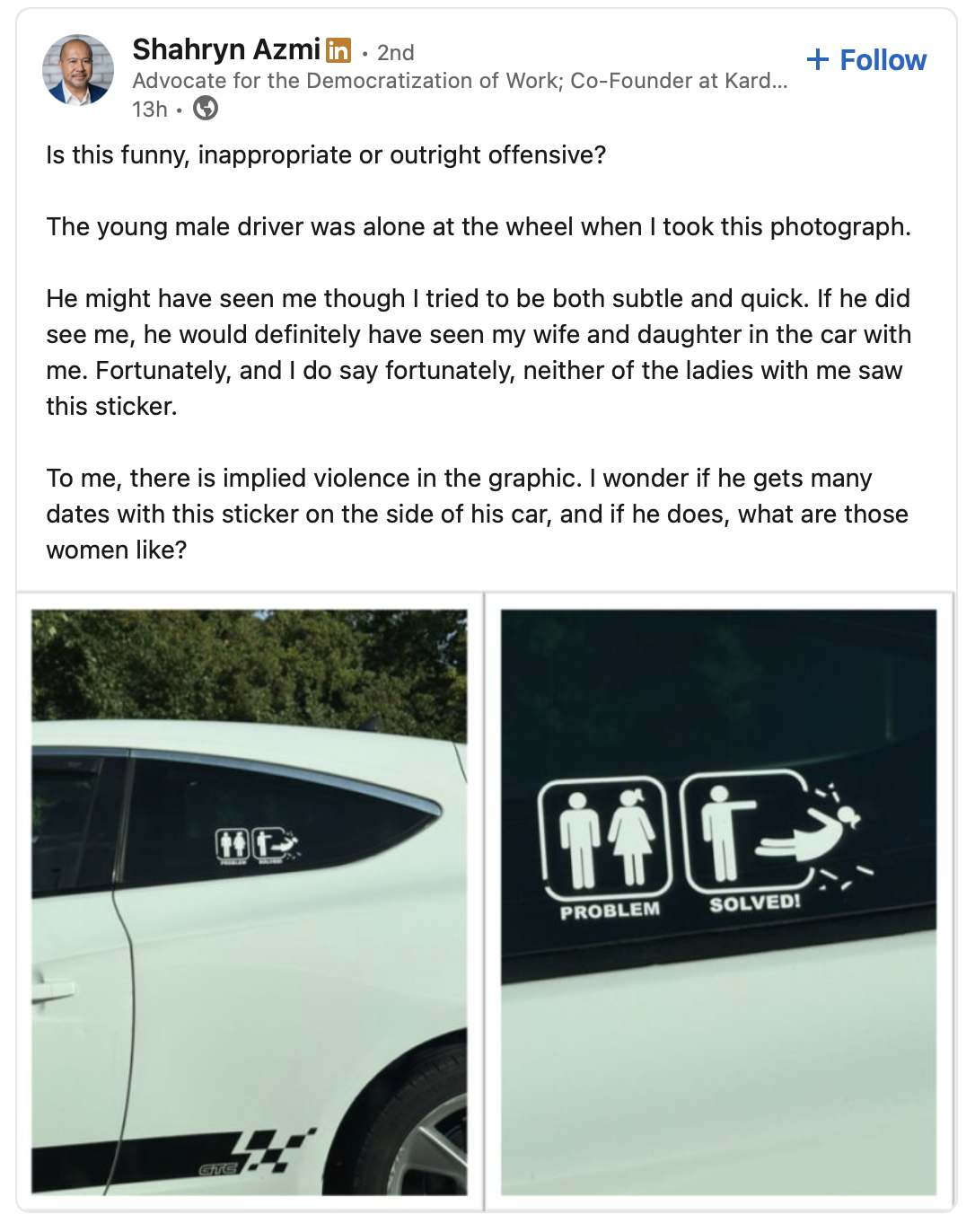Think About the Nudge

“Implied violence” is generous. This is an image of a man striking a woman so hard as to shatter a wall. In this sticker, it’s called a “solution”. In the real world, it’s violence and assault.
This is not okay. We must do better than this.
This sticker normalizes violence under the veneer of a chuckle. That’s precisely why it ought to be called out: it nudges us in a very bad direction with a feigned smile.
To those who say “It’s just a sticker, chuckle and move on”, I say:
Think about the nudge.
If you’ve read “Leadership and Self-Deception”, consider the boxes in that sticker. Does this normalize in- or out-of-the-box thinking?
Does this sticker nudge us to treat other people as people, or as disposable objects? Or worse than that? What does this sticker say about how men can treat women?
It’s “funny” because of the shock of a literal “punch line”. It’s not funny because of nuance, or subtext. It’s shocking.
Shock like this makes one sick unless you look the other way and go numb.
Is this “problem solved” by kicking someone out of your life? Or is this “problem solved” by throwing a woman hard enough that they “know their place”?
Is that the kind of world you want to live in? Is that the kind of world you want the women you know or don’t know to live in?
If you’ve read this far and are about to say “But this is LinkedIn! For work! Not social commentary!” Stickers like this may not belong on your laptop or in your cubicle, but do we really want them everywhere else?
Solving this particular problem runs deeper than hiding it, though. Scrape away the sticker, and the worldview that created, sold, and applied that sticker is still there.
We must do things to change how we see: to see people as people and not as objects (Seriously, go read Leadership & Self-Deception or The Anatomy of Peace).
To objectify someone, to see and treat someone as a disposable object, is violence.
We must do better.
“If a factory is torn down but the rationality which produced it is left standing, then that rationality will simply produce another factory. If a revolution destroys a government, but the systematic patterns of thought that produced that government are left intact, then those patterns will repeat themselves. . . . There’s so much talk about the system. And so little understanding.”
~ Robert Pirsig, Zen and the Art of Motorcycle Maintenance
“Every nation and every man instantly surround themselves with a material apparatus which exactly corresponds to . . .their state of thought. Observe how every truth and every error, each a thought of some man’s mind, clothes itself with societies, houses, cities, language, ceremonies, newspapers. Observe the ideas of the present day . . . see how timber, brick, lime, and stone have fl own into convenient shape, obedient to the master idea reigning in the minds of many persons. . . . It follows, of course, that the least enlargement of ideas . . . would cause the most striking changes of external things.”
~ Ralph Waldo Emerson, “War,” lecture delivered in Boston, March, 1838. Reprinted in Emerson’s Complete Works, vol. XI, (Boston: Houghton, Miffl in & Co., 1887), 177.
Reposted from LinkedIn.